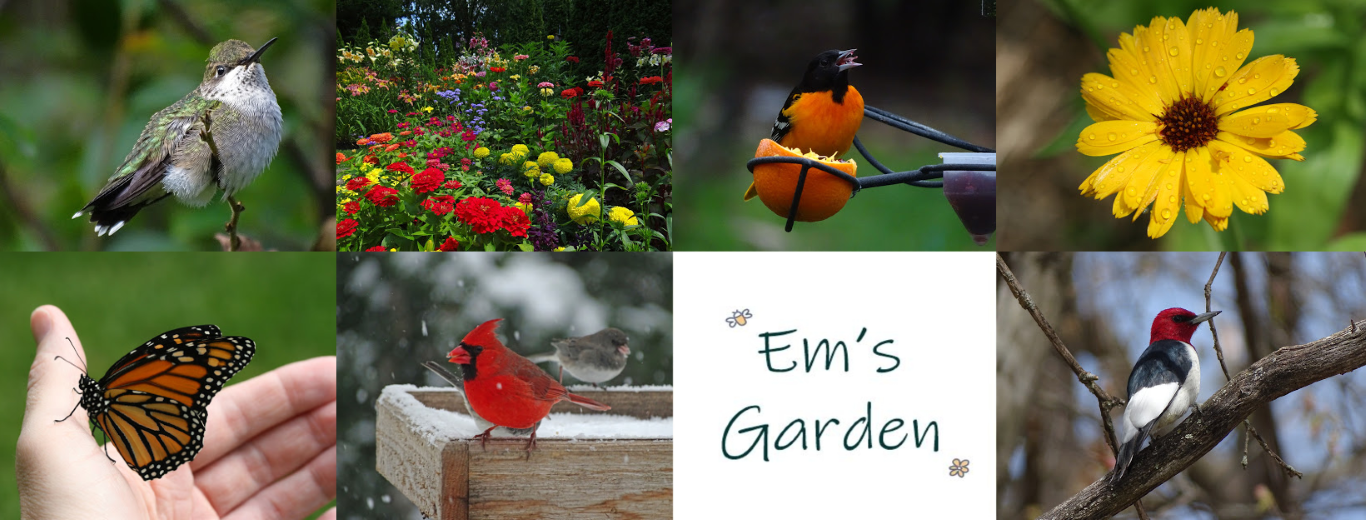Birds move pretty fast. If you want to be able to identify them in your backyard or while taking a walk or hike, it helps to know some of their identifying characteristics.
If you only saw this flash of an image in a shrub, could you identify this bird?
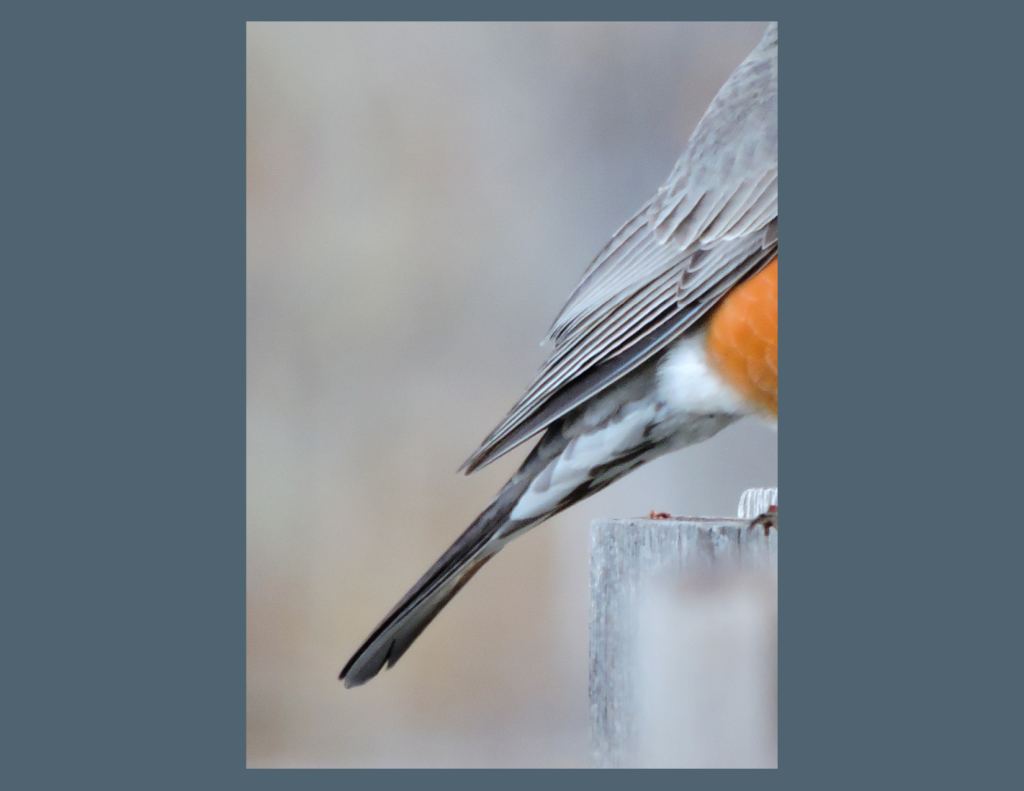
Its undertail coverts (the underside feathers at the base of a bird’s tail) are white with a little gray. And it looks like the belly might be rust-colored.
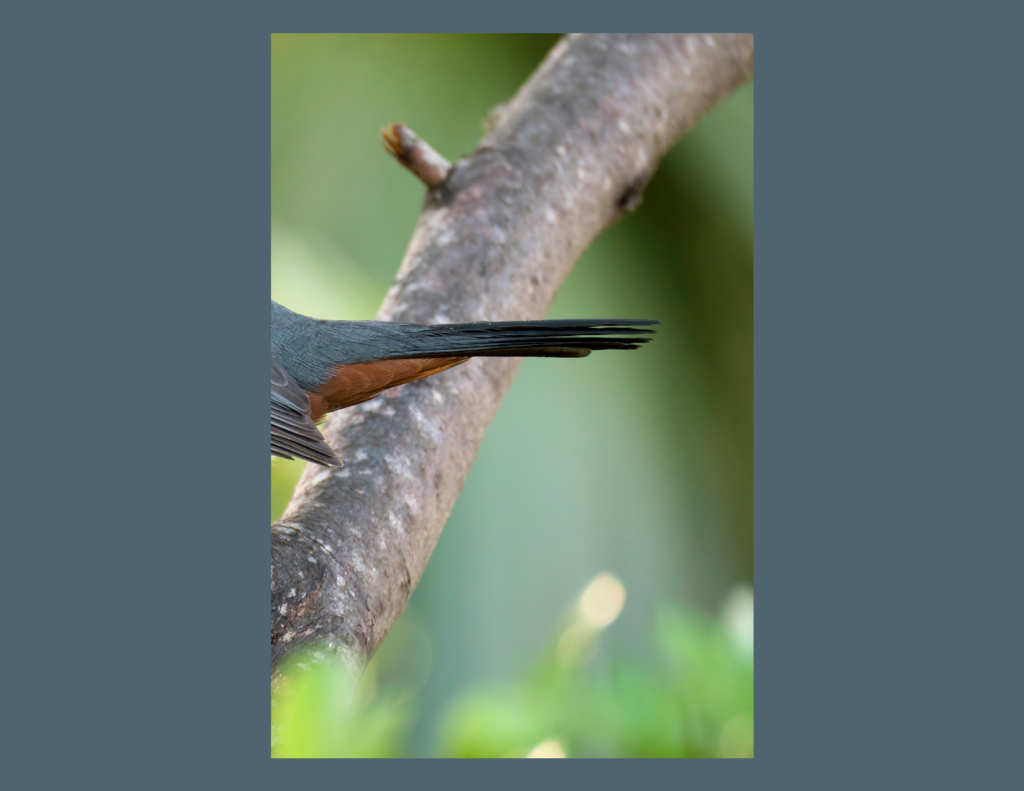
But wait? Is this the same bird? The undertail coverts are also rust-colored, but the color is a little darker. And the tail is a darker gray.
Here are some hints. These are two different species, but they are similar in size. They both like to eat fruit, and you might find either one in your backyard in the spring.
Where you locate a bird can also give you hints about what species it might be.
The first photo is of an American Robin. These birds like to hop and walk around backyards and parks searching for worms.
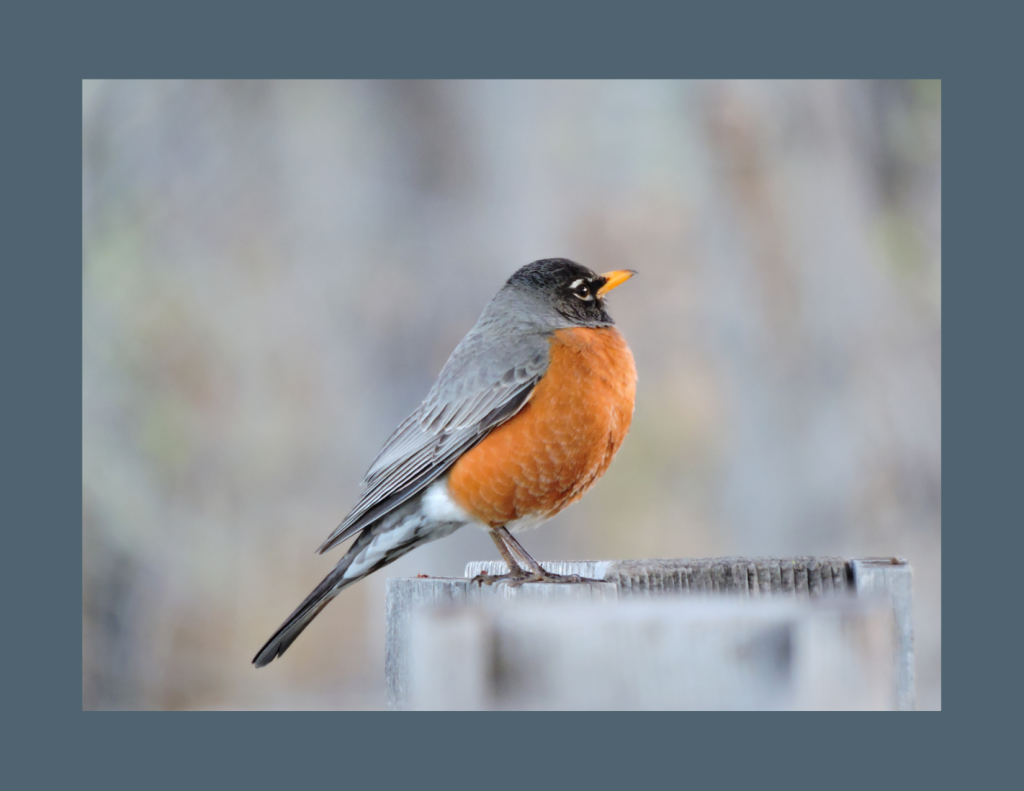
The bird in the second photo is a Gray Catbird.
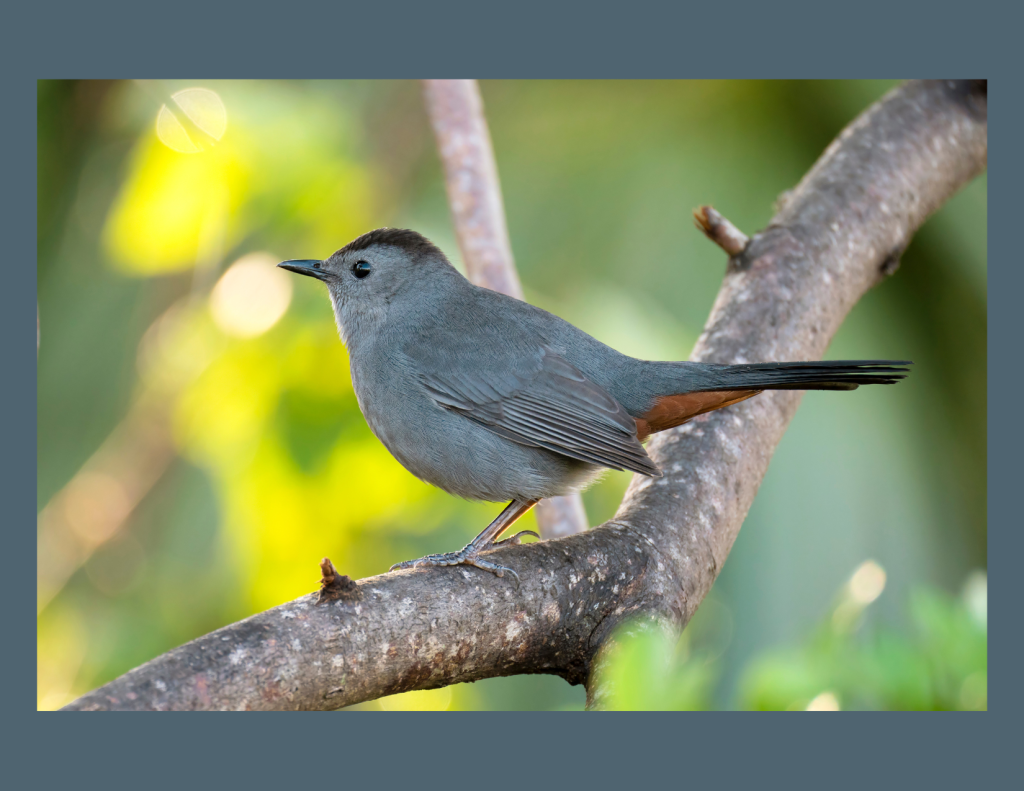
They are gray all over except for those cinnamon-colored undertail coverts and that little black cap.
While robins don’t mind open spaces, catbirds prefer hanging out in dense shrubs and thickets. However when males sing, they often pick a spot out in the open, so they can be pretty easy to find. If you have fruiting trees or bushes in your yard (like serviceberries, crabapples or blueberries) you might see either of these birds.
Gray Catbirds and American Robins will also come to birdfeeders. In the spring when I put out orange halves and grape jelly to entice the migrating Baltimore Orioles, catbirds and robins will often visit to sneak a bite of the tasty treats. And robins like shelled peanuts as well.
The next time you see a Gray Catbird or an American Robin up close or through your binoculars, take a moment examine some of the other identifying characteristics that could help you tell them apart from other bird species.
